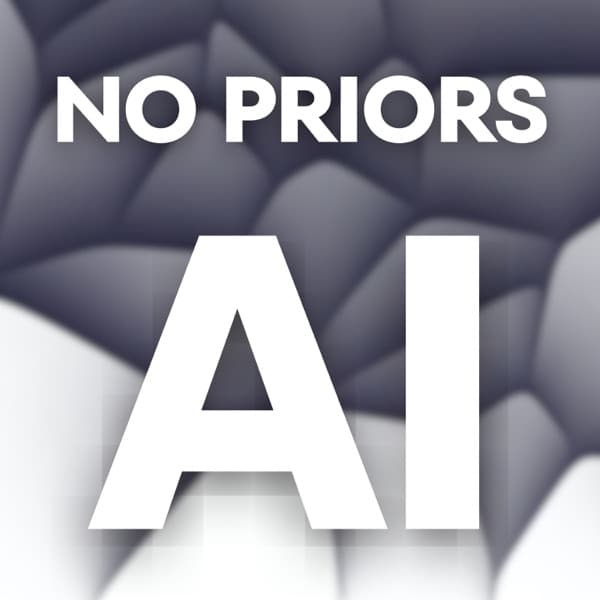Lightcone Podcast: Discussion on AI's impact on science, technology, and the potential mainstream adoption of crypto payments.
Lightcone Podcast - The Lightcone 2025 Forecast

The discussion highlights AI's role in accelerating scientific and technological advancements, referencing significant achievements like Hinton's work on deep neural nets and Demis's Nobel Prize in Chemistry for AlphaFold. The conversation shifts to the potential for AI to win more Nobel Prizes, possibly in mathematics or economics, due to collaborations with prominent figures like Terence Tao. The speakers predict that crypto, particularly stable coins, will become mainstream in the coming year, with more people using them for everyday purchases. This prediction is based on the growing number of crypto wallet users and the ease of getting merchants to accept stable coins. The conversation also touches on the relationship between interest rates, government spending, and crypto prices, suggesting that reduced government spending could lower interest rates and boost the economy. Additionally, the potential for AI to act as a deflationary force is discussed, which could allow for lower interest rates without causing inflation. Finally, there's excitement about the development of AI that can engage in real-time, natural-feeling Zoom calls, potentially revolutionizing virtual interactions.
Key Points:
- AI is driving advancements in science and technology, with potential for more Nobel Prizes.
- Crypto payments, especially stable coins, are predicted to become mainstream due to ease of adoption.
- Interest rates and government spending impact crypto prices; reduced spending could lower rates.
- AI may act as a deflationary force, allowing for lower interest rates without inflation.
- Real-time AI interactions in virtual meetings could become a reality, enhancing communication.
Details:
1. 🎉 Celebrating AI Achievements: Nobel Prizes and Future Prospects
1.1. AI Achievements in Science
1.2. AI Impact on Healthcare
1.3. AI Innovations in Finance
2. 🔮 Speculations on Future Nobel Prize Wins
- There are still four Nobel Prizes remaining to be won, suggesting potential opportunities in various fields.
- A collaboration with OpenAI and Terence Tao, a renowned mathematician, could lead to a Nobel Prize in mathematics, highlighting the impact of interdisciplinary partnerships.
- The potential for a Nobel Prize in Economics exists if innovative economic theories are developed, indicating a need for groundbreaking research in this field.
- Emerging fields such as data science and climate science present new opportunities for Nobel recognition, emphasizing the importance of innovation in these areas.
- Recent Nobel trends show a shift towards interdisciplinary and collaborative efforts, suggesting that future awards may favor cross-field partnerships.
3. 💸 Crypto's Path to Mainstream: Stable Coins and Marketplaces
- Stable coins are expected to drive crypto mainstream adoption by facilitating everyday transactions such as buying coffee or books, addressing the practical utility of cryptocurrencies.
- These coins help solve the chicken-and-egg problem in payment networks by providing a consumer base, with hundreds of millions of crypto wallets now holding stable coins, which enhances marketplace stickiness.
- The challenge remains to encourage merchants to accept stable coins like USDC, with a focus on creating incentives and easing integration processes.
- A separate but crucial factor is the improving regulatory environment, which is anticipated to accelerate retail adoption by providing clearer guidelines and fostering trust among users and merchants.
4. 🔍 The Urgency for Financial Transparency
- The Synapse disaster illustrates the risk of losing tens to hundreds of millions of dollars in user funds due to lack of transparency, underscoring the need for open ledger systems.
- An open ledger system could potentially prevent such losses by enabling tracking of where funds are directed, providing an example of increased accountability and security.
- Current systems without financial transparency struggle to track and recover misplaced funds, highlighting the importance of adopting transparent financial practices.
- Implementing open ledger systems can serve as a proactive measure to ensure funds are accurately tracked and recoverable, especially critical in preventing financial disasters similar to Synapse.
5. 📈 Dogecoin's Role in Government Spending and Economic Trends
- Dogecoin's initiative, if successful in reducing government waste, could indirectly boost its value by impacting economic conditions.
- Government deficit spending impacts interest rates; successful reduction in spending could lower these rates.
- Lower interest rates typically stimulate GDP growth, which could positively influence crypto prices, including Dogecoin.
- Cryptocurrencies have a strong correlation with interest rates; thus, lower rates are likely to lead to higher crypto prices and economic growth.
- If the initiative fails, increased government spending could occur, similar to past trends, potentially negatively affecting interest rates and crypto markets.
6. 📉 The Deflationary Influence of Tech and AI
- Tech, in general, is deflationary, counteracting typical economic inflationary trends.
- AI is potentially the most powerful deflationary force, suggesting significant long-term economic impact.
- The implementation of AI could allow for lower interest rates without triggering high inflation.
7. 🤖 The Evolution of AI in Virtual Communication
- By 2024, AI technology is expected to enable real-time, natural-feeling Zoom calls with AI avatars, overcoming previous challenges related to high latency and poor lip-syncing. Companies like Zoom and Microsoft are at the forefront of these advancements.
- Current AI virtual communication solutions often suffer from the 'uncanny valley' effect, where virtual avatars appear almost, but not quite, human. Future developments aim to eliminate this effect, making interactions feel seamless and realistic.
- The ultimate goal is to achieve a 3D Turing test level of interaction. This means AI participation in virtual meetings will be indistinguishable from human participants, thereby revolutionizing the virtual communication landscape.
Included Channels
 All-In with Chamath, Jason, Sacks & Friedberg
All-In with Chamath, Jason, Sacks & Friedberg Lex Fridman Podcast
Lex Fridman Podcast Modern Wisdom
Modern Wisdom In Depth
In Depth Greymatter
Greymatter Latent Space: The AI Engineer Podcast
Latent Space: The AI Engineer Podcast a16z Podcast
a16z Podcast Lenny's Podcast: Product | Growth | Career
Lenny's Podcast: Product | Growth | Career How I Built This with Guy Raz
How I Built This with Guy Raz Lightcone Podcast
Lightcone Podcast No Priors AI
No Priors AI The Twenty Minute VC (20VC): Venture Capital | Startup Funding | The Pitch
The Twenty Minute VC (20VC): Venture Capital | Startup Funding | The Pitch BG2Pod with Brad Gerstner and Bill Gurley
BG2Pod with Brad Gerstner and Bill Gurley






